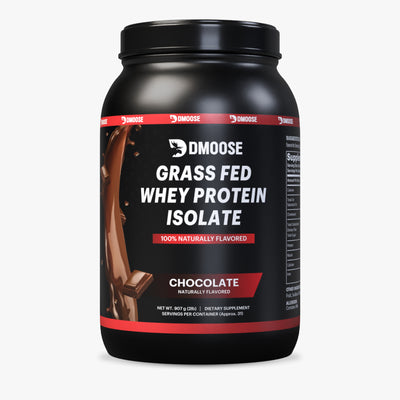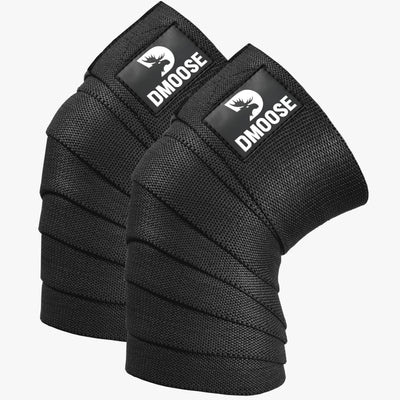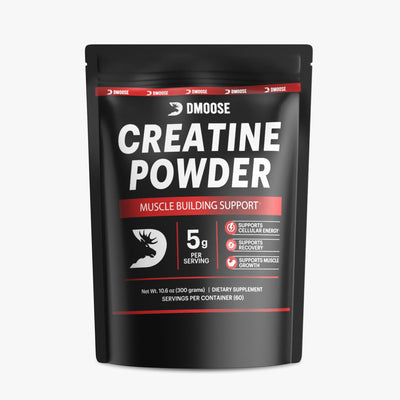Stop wasting your time in the gym with a training split that isn’t working! If your muscles aren’t growing the way they should, chances are your program is holding you back.
Many lifters make the mistake of following outdated routines that don’t optimize volume, recovery, and frequency, leading to subpar results and endless frustration. But don’t worry, you’re about to unlock the secrets that can take your training to the next level.
This blog is inspired by insights from a highly respected fitness expert, Dr. Mike, who breaks down the science behind the perfect training split. And if you want to fuel your muscles properly and maximize your recovery, adding DMoose Whey Protein to your routine can help you see even better results.
Let’s dive into the three key factors that will help you maximize your muscle growth, optimize recovery, and finally start seeing the gains you’ve been working for!
Secret #1: Optimize Weekly Training Volume

Training volume is one of the biggest determining factors in muscle growth. If you’re not doing enough sets, your muscles won’t receive the necessary stimulus to grow. On the other hand, too many sets can lead to excessive fatigue, hampering recovery and performance.
The sweet spot lies somewhere between 6 to 20 sets per muscle group per week, depending on individual recovery ability and experience level. The key is progressive overload, gradually increasing your workload over time while allowing adequate recovery.
Whether you train a muscle two, three, or even six times per week, the total number of effective sets matters more than how they are distributed. The goal is to maximize workload while avoiding diminishing returns and excessive fatigue.
- Too little volume: Below 6 sets per week may not provide enough stimulus for growth.
- Too much volume: Above 20 sets per week can lead to excessive fatigue and hinder recovery.
- Distribution: Volume distribution matters less than total volume; whether you train a muscle twice a week or six times with fewer sets, the key is to hit the right total.
If you’re doing only three sets for legs per week or 36 sets for chest, it’s time to adjust! Proper volume ensures progressive overload and muscle adaptation.
For safe and effective high-volume training, use the DMoose Knee Wraps to support your joints and maximize performance during heavy squats!
Related Article: High Reps Vs. Low Reps for Muscle Growth & Strength
Secret #2: Allow for Proper Recovery Between Sessions

Recovery is just as important as the workout itself. Many lifters make the mistake of training the same muscle group too soon after their last session, leading to excessive fatigue and suboptimal performance.
If a muscle is still sore or feels weaker than usual, it hasn’t fully recovered yet, and training it again can increase injury risk and reduce growth potential. The ideal recovery window for most muscle groups is between 48 to 72 hours, though this can vary based on intensity and individual recovery capacity.
If you’re constantly feeling sore or weaker in subsequent workouts, it’s a sign that you need to space out your sessions better or reduce volume.
- Soreness Check: If a muscle is still sore from your last workout, training it again may impair recovery and increase injury risk.
- Strength Test: If you notice your muscles feel unusually weak during warm-ups, you’re likely training them too soon.
- Ideal Recovery Time: Most muscles need 48–72 hours to fully recover, meaning you should space training sessions accordingly.
Example splits that promote good recovery:
- Chest on Monday and Thursday (Good)
- Chest on Monday and Tuesday (Bad, overlapping fatigue)
If you prefer high-frequency training, reducing daily volume can help. Instead of doing 6+ sets in one session, you can distribute them across multiple days. For example, doing 2 sets of quads daily instead of 6 sets in one go ensures minimal fatigue buildup.
Related Article: 8 Ways to Relieve Muscle Soreness After Exercise
Secret #3: Train Each Muscle Group At Least Twice Per Week

If you’re still following the "Bro Split" where each muscle is trained only once per week, you’re missing out on a major opportunity for faster muscle growth.
While this method can work, most research suggests that training a muscle at least twice per week is significantly more effective for hypertrophy.
The reason? Muscle protein synthesis (the process responsible for muscle growth) typically peaks around 24–48 hours post-training, meaning that if you wait a full week before training the same muscle again, you’re losing valuable time where further growth could be stimulated. Instead, training each muscle two to three times per week ensures you maximize muscle-building potential without overtraining.
- Training a muscle once a week? You’re missing out on extra growth potential.
- Training a muscle twice a week? You’re in the optimal zone.
- Training a muscle three or four times a week? It may provide marginal benefits but requires careful recovery management.
The biggest gains come from switching from once per week to twice per week. After that, additional frequency offers smaller returns.
Improve your pulling power with DMoose Lifting Straps, perfect for heavy back and deadlift sessions!
Conclusion: Building the Best Training Split
By structuring your program with intelligent volume, strategic recovery, and an optimal frequency of at least twice per week per muscle group, you’ll unlock real, measurable progress. No more wasted effort. No more guesswork. Just pure, science-backed muscle gains.
A perfect training split follows three fundamental principles:
- Maintain proper weekly volume (6-20 sets per muscle group).
- Ensure muscles are fully recovered before re-training them.
- Train each muscle at least twice per week for maximum gains.
If you’re serious about transforming your body, start applying these secrets today. Track your workouts, monitor recovery, and tweak your plan until you find your perfect rhythm.
FAQs
1. What is the best training split for muscle growth?
The best training split depends on your goals, experience, and recovery ability. However, most lifters benefit from a split that allows each muscle group to be trained at least twice per week. Popular options include Upper/Lower Splits, Push/Pull/Legs (PPL), and Full-Body Workouts. The key is to ensure sufficient volume, recovery, and progressive overload.
2. Can I train the same muscle group every day?
It is possible, but not recommended for most lifters. Training the same muscle daily requires a very low volume per session to prevent overtraining. Instead of daily sessions, most people see better results by training each muscle 2-4 times per week with enough rest between workouts to optimize recovery and strength.
3. How do I know if I'm overtraining a muscle group?
Signs of overtraining include persistent muscle soreness, decreased performance, lack of motivation, prolonged fatigue, and increased risk of injury. If you notice that your strength is declining, your muscles remain sore for several days, or you feel exhausted rather than energized after workouts, you might need to adjust your frequency or volume.
4. Is a Bro Split effective for muscle growth?
A Bro Split (training each muscle only once per week) can work, but it’s not the most optimal approach for hypertrophy. Research shows that training a muscle at least twice per week leads to better growth due to repeated muscle protein synthesis stimulation. If you prefer a Bro Split, consider adding a second session for each muscle within the week to enhance results.
5. How can I improve recovery between training sessions?
Recovery is crucial for maximizing muscle growth. Key strategies include getting enough sleep (7-9 hours), consuming adequate protein and calories, staying hydrated, using active recovery methods, and incorporating proper rest days. Additionally, supplements like DMoose Grassfed Whey Protein can help optimize muscle repair.
6. Should I change my training split over time?
Yes! Your body adapts over time, so it's important to periodically adjust your training split to continue making progress. This could mean increasing volume, changing exercises, adjusting frequency, or even switching to a different split entirely. Tracking your progress and making tweaks based on performance and recovery will keep you on the path to continuous improvement.
Reading List
- 12 Mistakes That May Be Hindering Your Progress At the Gym
- The Best Muscle Groups to Work Out Together for Best Results
- The 10 Absolute Worst Muscle-Building Mistakes Beginners Make
- Workout Meal Plan According to Professional Athletes for Better Results
- 7 Effective Weight Loss Tips
- 9-Weeks Bodyweight Workout Plan for Strong Muscles











